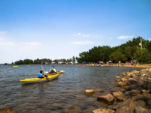Alberta could follow other provinces’ leads in setting rules for pot sales
By Medicine Hat News Opinon on September 23, 2017.
With the nation-wide legalization of recreational marijuana coming up in July 2018, the clock is ticking for Alberta to put in place its own set of regulations. Prime Minister Justin Trudeau is essentially legalizing weed while dumping the logistics of its distribution on the provinces. If anything goes wrong, he can blame the provincial governments and will still have kept his original election promise. Alberta is not alone without a plan. Of the 10 provinces and three territories, only Ontario and New Brunswick have come forward with their regulation methods, providing a study in contrasts for the other provinces’ reference. Highly unpopular Ontario Premier Kathleen Wynne was the first to reveal her province’s plan, which was the subject of much criticism. While the province has many illegal dispensaries that are currently engaged in a game of whack-a-mole with the authorities, they could be converted to legal entities. They have expertise on the product. But Wynne, perhaps to shore up her law-and-order credentials before next year’s provincial election, opted not to take this route. Legal pot will only be available through government-run retailers connected with the Liquor Control Board of Ontario (LCBO). The good news for workers is that these will be unionized jobs, but given the increasing precarity of work at the LCBO, this is not as positive as it sounds. Ontario plans to open 150 of these marijuana stores by 2020, but will start with only 40 in 2018. This is not a lot in a province of 13.6 million people. Of course, Alberta doesn’t have government control over liquor, so it’s highly unlikely that they’ll take this route for pot. New Brunswick, by contrast to Ontario, is creating a Crown corporation that will provide licences to two local producers: Organigram and Canopy Growth. This method allows the government to have oversight over selling weed, while stepping out of the way and allowing producers to put their expertise to use. This saves the province the costs of opening its own stores and training provincial employees, while allowing the government to take in revenue from taxation. Alberta ought to follow a route closer to New Brunswick’s than Ontario’s, albeit with the caveat of encouraging unionization for employees. Overall, Ontario has released far more details of its plan, flawed as it is, than New Brunswick. Toronto plans to price pot at $10 a gram, which is one aspect of its plan that Alberta should replicate. If memory serves, marijuana on the street costs the same. If the government wants to discourage the black market, which is one of the main rationales Trudeau provides for legalization, then it has to make it no more expensive, or inconvenient, to buy legal marijuana. All we’ve heard from our province is the possible age restriction of 21 floated by Alberta Health Services, with the added suggestion of raising the alcohol and tobacco ages from 18 to match it. Both Ontario and New Brunswick are likely to make the legal age for consumption 19, matching their liquor and tobacco laws. This makes much more sense, though Alberta’s current age restriction on alcohol and tobacco seems most sensible. If you’re old enough to join the military and fire a gun, you’re old enough to consume substances responsibly. (Jeremy Appel is a News reporter. To comment on this and other editorials, go to https://www.medicinehatnews.com/opinions.) 23-22



